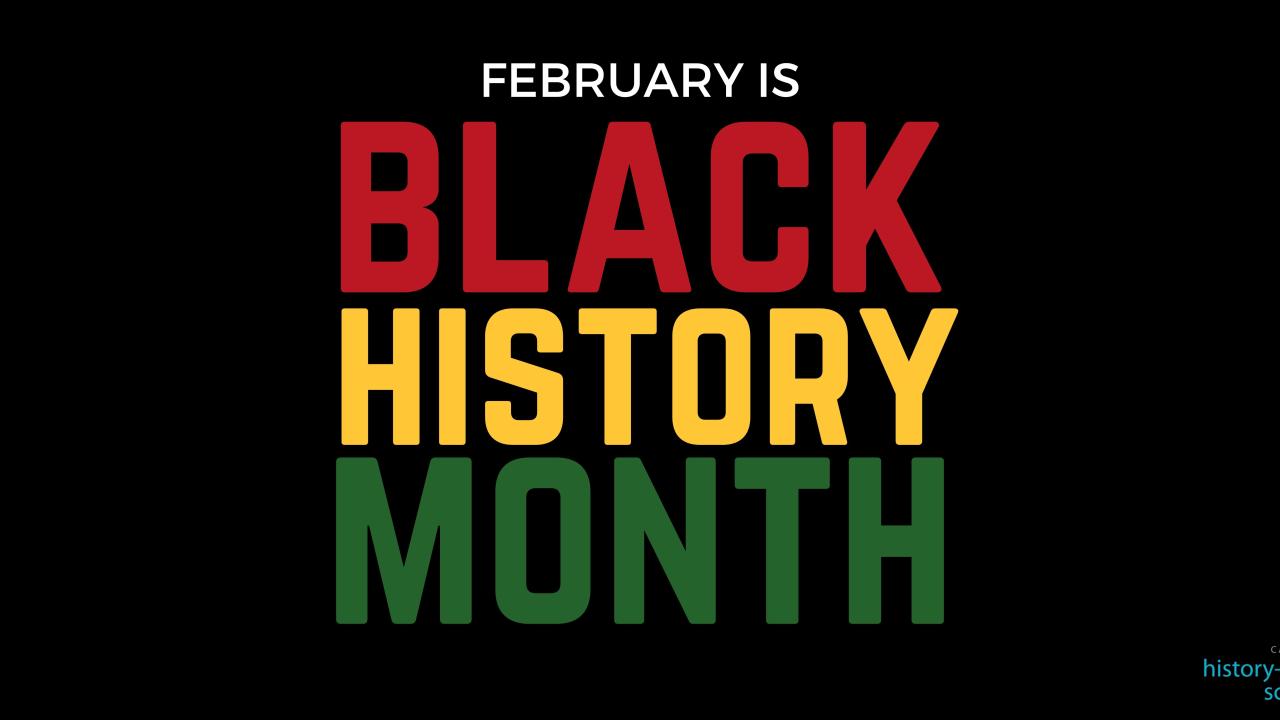
Black History Month
Black History is More than Civil Rights History
For nearly one hundred years, Americans have celebrated Black History during February. In 1926, during the height of the Jim Crow era in the United States, historian Carter G. Woodson and the Association for the Study of Negro Life and History introduced Black History Week as a week-long celebration during the second week of February. This week coincided with both Abraham Lincoln’s birthday and Frederick Douglass’s birthday celebration. In the 1960s, Black Civil Rights activists worked to create Black History Month in universities; and in 1976, President Gerald Ford formally recognized February as Black History Month. Every president since Ford continued to mark the occasion and celebrate Black history, and countries around the world mark February as Black History Month.
Black History is more than Civil War and Civil Rights. Black History Month allows us an opportunity to make visible the stories, struggles, and triumphs of Black people in America and internationally in an effort to better understand the world in which we live. We hope that telling the stories of heroes and complicated individuals within history will foster empathy within students whose experiences vary, and pride for students who can see themselves in the historical record. This month allows us the intellectual space to consider how our classroom instruction can convey more truthful and accurate renderings of the past and present so that we don’t replicate the classes of many of our childhoods, that relegated the Black experience to the Civil War and Civil Rights (although you will see that we have excellent lesson plans on those as well!). In doing so, we are working to support students’ abilities to make connections and to think more critically about the past and present and ask questions like “how does historical redlining connect to present day health and health care for Black and Brown people?” As with redlining, some of these negative experiences continue to have racialized consequences long after the laws have changed. Black history helps us to understand our diverse past, to critically engage in our present, and to envision our future.
The resources we curated below offer educators an accessible opportunity to consider how classroom lessons are helping students understand the diversity of the American experience, how to support civic engagement, develop historical empathy, and hone critical thinking skills for students.
- This 2020 edition of The Source contains an article that places The Movement for Black Lives in historical context and provides teaching resources from our regional sites (educators and leaders).
- This Primary Sources Set of African American Biographies also comes with an activity for students to make a difference in their communities. (2nd Grade)
- This Primary Source Set of the Aboliton of Slavery Movement illustrates the themes and tensions of anti-slavery by looking at “The Narrative Life of Frederick Douglass.” (8th Grade)
- History Blueprint of The Civil War contains an entire unit of eight lesson plans, primary sources, background materials, and more. (middle school)
- This Current Context, “Youth in Action” is a classroom-ready resource that situates student movements within a historical context and provides primary source materials for students to see the impact of youth activism. (high school)
Teaching and commemorating Black history of course does not begin and end in February. Educators work hard to bring these conversations, resources, and opportunities into their classrooms throughout the year. Today, as much as at any time in the recent past, throughout the country, Black history is facing censure, denial, and erasure. The California History-Social Science Project prioritizes teaching students about the complex world within which we live, and inquires into how race, class, and gender shaped our past and present.
Colorblind education is unattainable because race, though a social construct, is an embodied reality. Communities experience life differently in the United States. That is sometimes beautiful and sometimes tragic. Attempts to erase race from the educational conversation undermines historical accuracy, inhibits critical thinking, and will continue to have racialized consequences. Attempts to erase race are racist.
As educators, we can help students navigate this world anchored by a history they are a part of, a heart guided by empathy, and feet that march for change.
For more teaching resources, please visit our Monthly Highlights Page.
